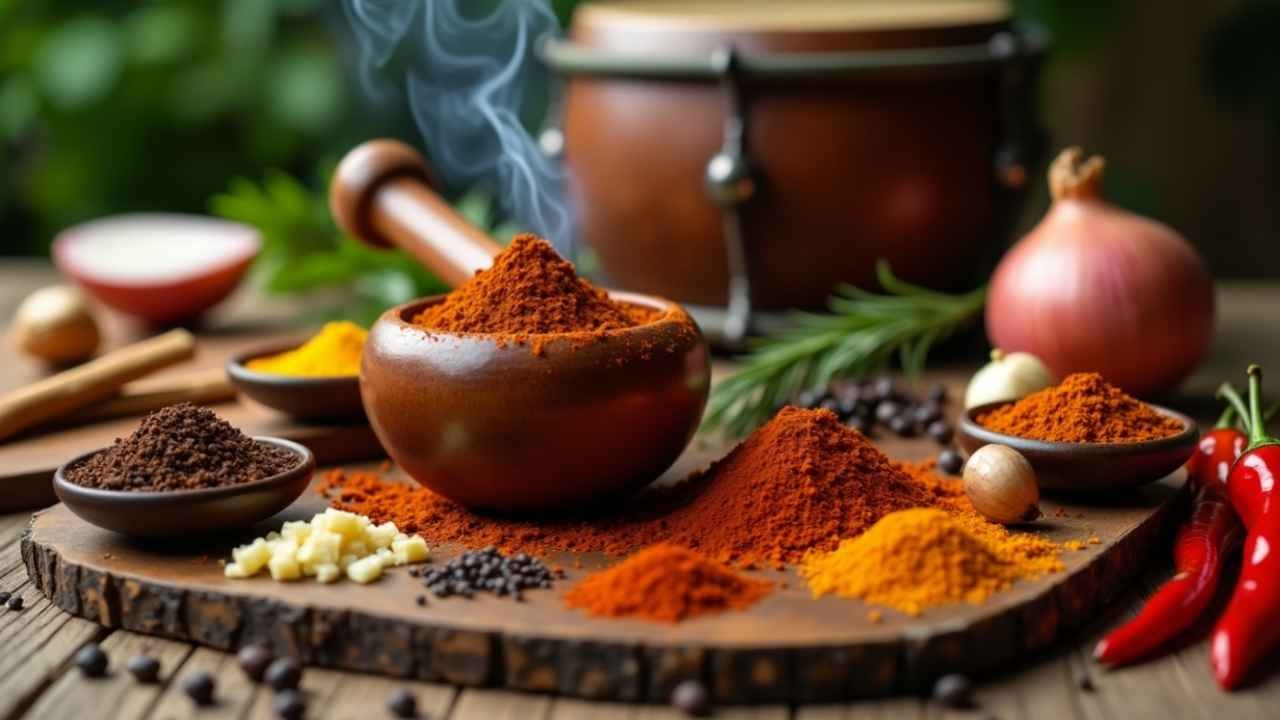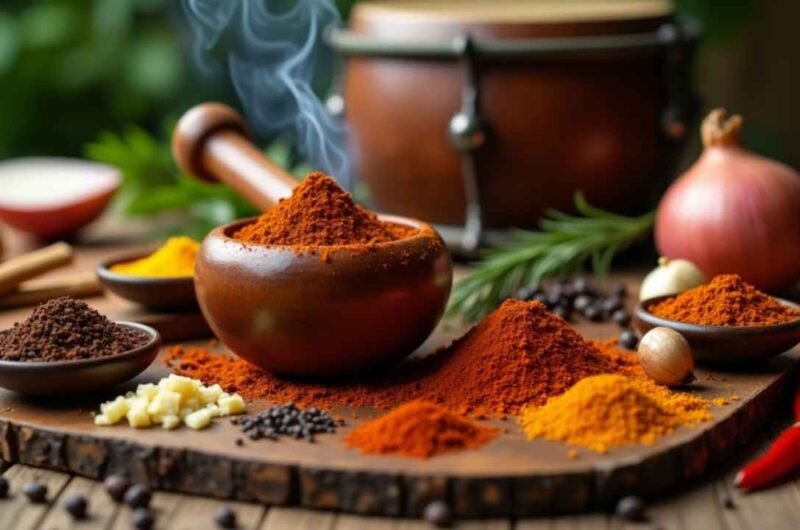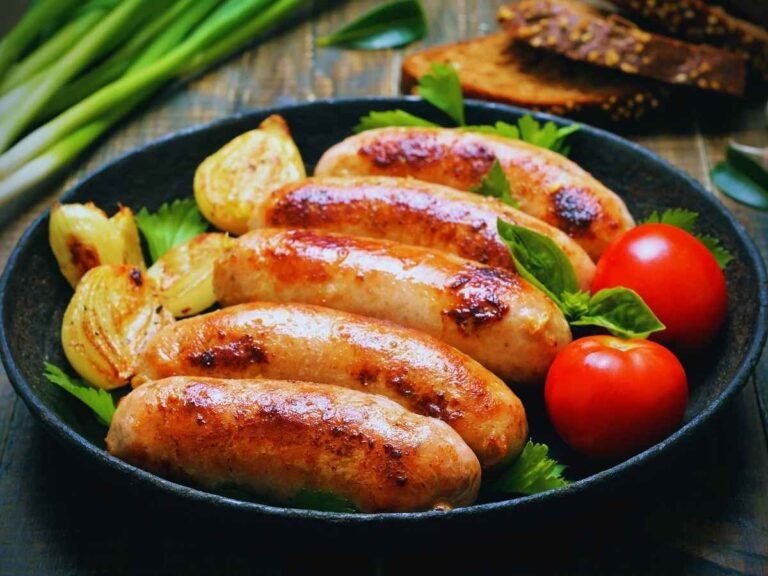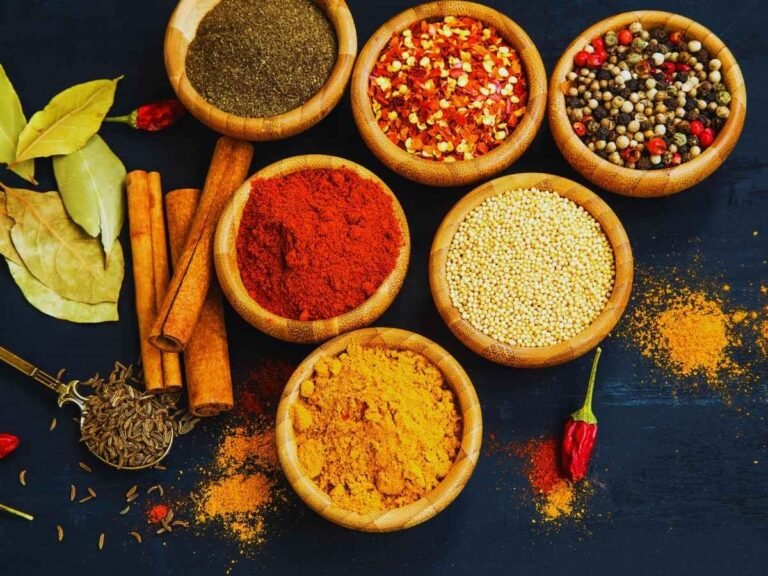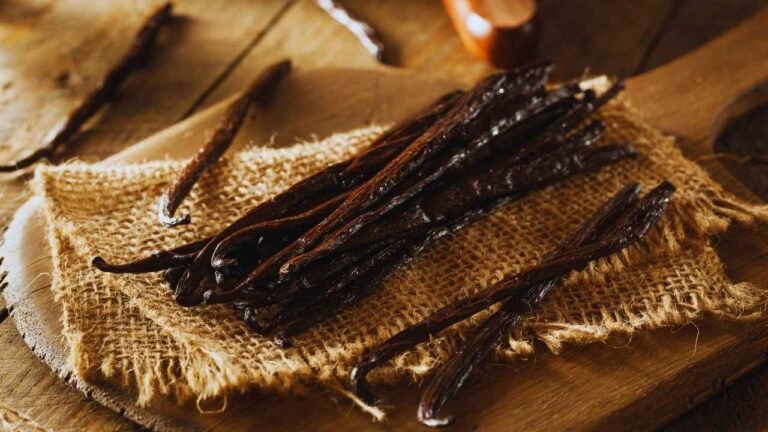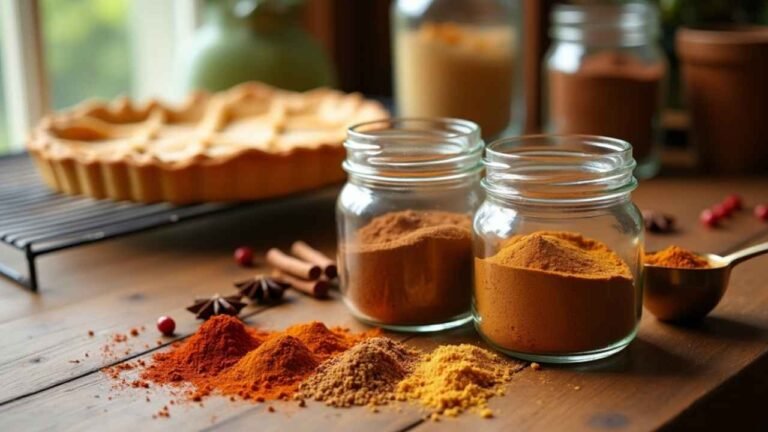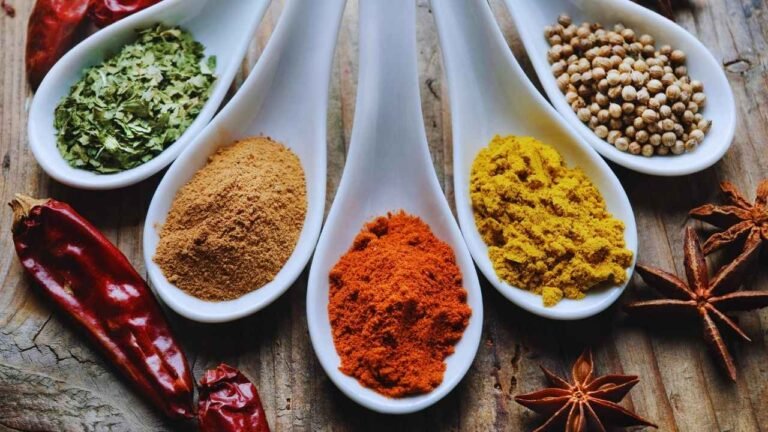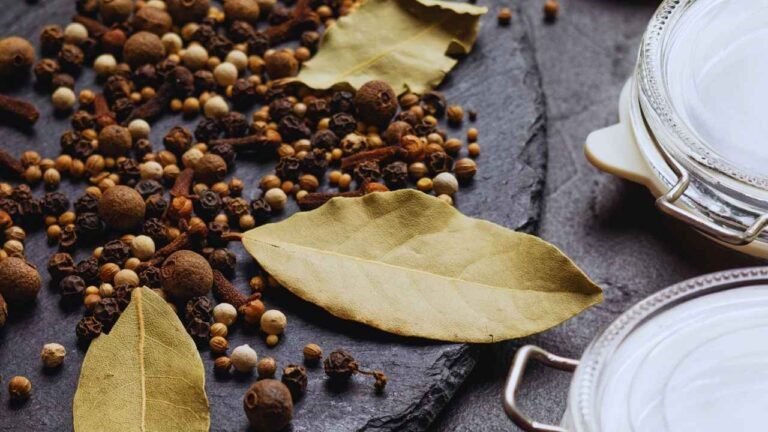How to Make Authentic Jerk Spice Recipe at Home
Jerk spice stands out as the Caribbean’s most celebrated seasoning combination with its distinctive mix of fiery heat, warm spices, and aromatic herbs. Scotch bonnet peppers, allspice, thyme, and other key ingredients blend perfectly to create its signature taste. Professional chefs and home cooks worldwide have embraced this seasoning’s complex flavor profile.
Home cooks can craft authentic Jamaican jerk spice and adjust the heat level to match their priorities. This complete guide explains the traditional methods and key components needed to make this versatile seasoning. You’ll understand jerk seasoning’s historical roots and find exciting ways to use this flavorful spice mixture in both classic and contemporary dishes. The proper blending techniques ensure consistent results every time.
The History and Culture of Jerk Seasoning
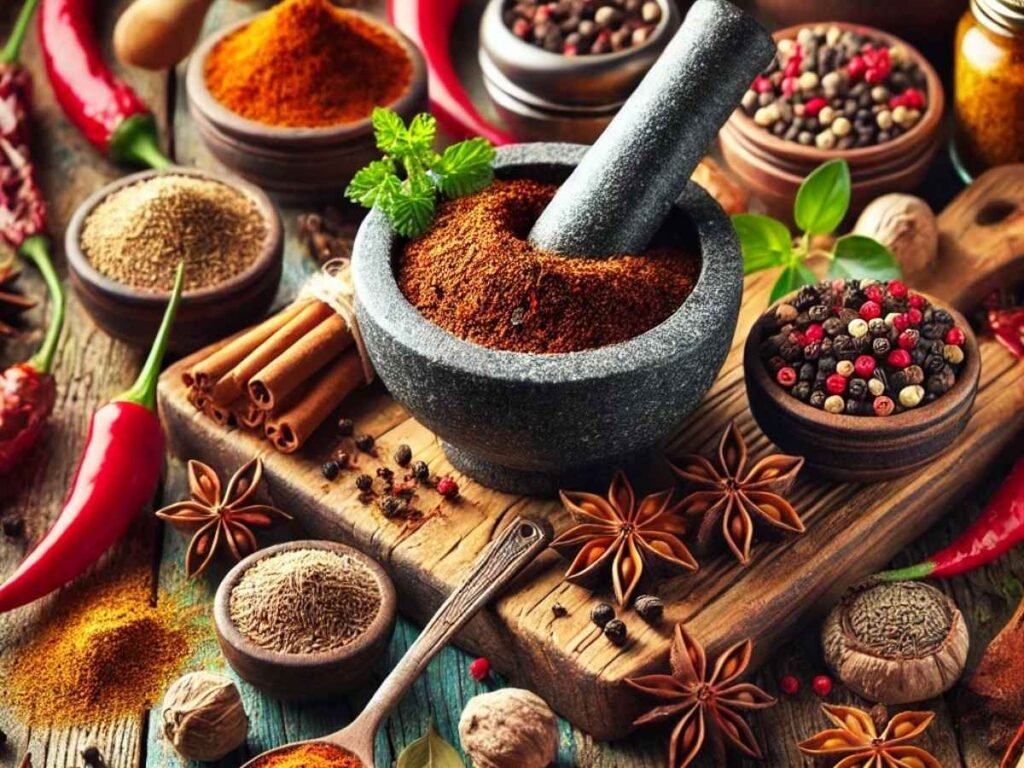
Jamaican jerk spice recipe spans many centuries and blends indigenous wisdom with African culinary traditions. This unique seasoning tells a story of survival and creativity. Cultural preservation shaped its development across Jamaica’s rich terrain.
Origins in Jamaica
Jamaica’s jerk seasoning has its roots in the Taíno people, the island’s original inhabitants. These skilled farmers created the original preservation methods with local spices and herbs. The story took its most important turn when the Maroons fled African slavery and found safety in Jamaica’s mountains. Their culinary practices blended with Taíno methods in the 17th century and created what we now call “Jamaican Jerk.”
Key historical elements that created jerk seasoning:
- The Maroons cooked without smoke to stay hidden
- African spice traditions merged with native methods
- People developed better ways to preserve food
- Jamaica’s rich soil provided perfect local ingredients
Traditional cooking methods
Jerk preparation goes beyond mixing spices—it’s a skill perfected across generations. The secret lies in using pimento wood for smoking, which creates a unique flavor that modern methods can’t match. Cooks traditionally prepare the meat in underground pits or over pimento wood fires. They cover it with plantain leaves to lock in the moisture and enhance the flavors.
Traditional Method Modern Adaptation Underground smokeless pits Conventional grills Pimento wood smoking Various wood chips Plantain leaf wrapping Foil wrapping Wild game meat Various meats and vegetables Development of jerk spice blends
Jerk seasoning started as a preservation method and grew into a celebrated culinary tradition. Jamaica’s northeastern coast features the legendary Boston Beach, which shows evidence of this development through its traditional preparation methods. The seasoning’s versatility has expanded beyond pork and now enhances chicken, seafood, and vegetarian dishes.
Modern jerk seasoning keeps its essential character while adapting to today’s tastes. Scotch bonnet peppers, allspice, thyme, and various aromatics remain the key ingredients, though cooks adjust proportions and add new spices. This flexibility has made jerk both a national treasure and a globally recognized flavor profile that appears in professional kitchens and home recipes worldwide.
Key Components of Authentic Jerk Spice
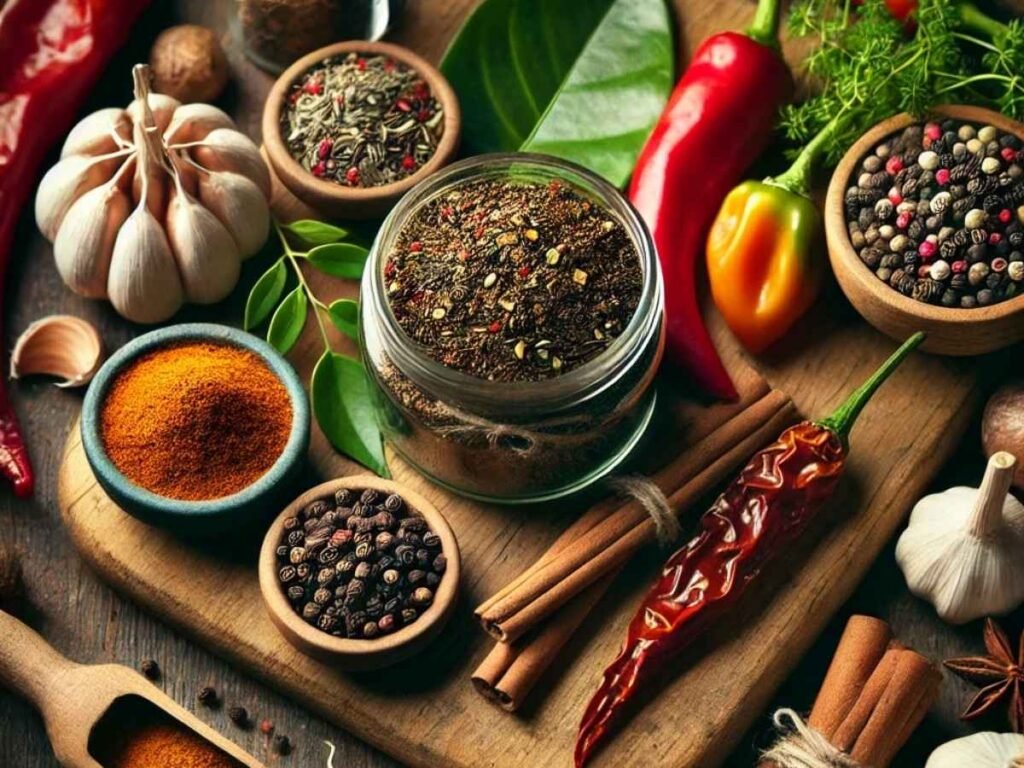
Everything in an authentic jerk spice recipe depends on balancing ingredients perfectly to create its distinctive flavor profile. The recipe’s ingredients work together to develop a complex taste. This significant combination of flavors has made this Caribbean seasoning legendary.
Allspice and Scotch bonnet peppers
Authentic jerk spice recipes rely on the essential combination of allspice and Scotch bonnet peppers. Allspice, Jamaica’s “pimento,” creates the warm, sweet flavor base that defines jerk seasoning. Scotch bonnet peppers bring their signature heat level, and cooks can adjust the amount based on taste preferences. Cayenne pepper works as a substitute when Scotch bonnets aren’t available, but it lacks their distinctive fruity heat profile.
Thyme and other herbs
Dried thyme serves as the key herb in jerk seasoning and adds an earthy depth that balances the heat and spice. Fresh thyme offers the best flavor, though dried thyme works well for home cooking. A typical herb blend has:
- Ground dried thyme (2-3 tablespoons per batch)
- Mixed dried herbs for complexity
- Dried basil for subtle sweetness
- Fresh coriander leaves for brightness
Aromatics and warming spices
Warming spices blend with aromatic foundations to create jerk seasoning’s rich, full-bodied flavor profile. Here’s a simple guide to mix your first batch:
Ingredient Quantity Flavor Note Onion powder 1 tablespoon Savory base Garlic powder 1 tablespoon Pungent depth Ground ginger 1 teaspoon Warm spiciness Ground cinnamon 2 teaspoons Sweet warmth Ground nutmeg 1 teaspoon Aromatic sweetness Ground cloves 2 teaspoons Deep warmth This seasoning blend gets its signature depth from these carefully balanced components. Brown sugar shows up in modern recipes and helps balance the heat. It also creates beautiful caramelization during cooking. Black pepper and salt will give a well-rounded flavor profile, and some cooks add smoked paprika for an extra layer of complexity.
These ingredients work best when measured precisely, though seasoned cooks often tweak the amounts based on their priorities. The joy of making jerk spice at home comes from knowing how to adjust the balance between heat, sweetness, and aromatic elements. This personal touch keeps the authentic character of this beloved Jamaican seasoning intact.
Crafting Your Homemade Jerk Seasoning
A homemade jerk spice recipe enables you to create fresh, customized blends that taste better than store-bought alternatives. You can craft this aromatic Jamaican seasoning in your kitchen with the right ingredients and proper techniques.
Selecting and preparing ingredients
A perfect jerk spice blend depends on fresh, quality ingredients. Fresh spices create intense flavors that outperform older ones. The cook needs to get into their spices’ colors and aromas to ensure freshness and quality.
The preparation process requires these steps:
- Get into spices to check freshness and aroma
- Measure ingredients with standard measuring spoons
- Keep all ingredients dry to avoid clumping
- Buy new spices to maximize potency
Blending techniques
The right way to blend ingredients will give you consistent flavor in the mixture. You should combine ingredients in this order to get the best results:
- Measure all ingredients precisely
- Whisk the larger quantity spices first (onion powder, garlic powder, thyme)
- Add smaller quantity spices gradually
- Mix really well until the blend shows a uniform color
You can work with whole spices and toast them before grinding to substantially improve their flavor. But this needs careful attention so they don’t burn. A spice grinder or mortar and pestle works great to grind whole spices to the right consistency.
Storage and shelf life
Storage methods substantially affect how long homemade jerk seasoning stays potent. These storage guidelines will help you keep your blend fresh:
Storage Aspect Recommendation Duration Container Type Airtight glass jar – Location Cool, dark place – Unopened Blend Pantry storage 2-3 years Opened Blend Airtight container 6 months Your seasoning blend stays fresh longer when kept away from direct sunlight and heat sources. Quality indicators tell you if your blend remains fresh:
- Look for vibrant colors
- Expect strong, fragrant aromas
- The blend should flow freely without clumps
A quick freshness test involves crushing a small amount in your palm. Fresh seasoning releases bright, aromatic scents. Make a new batch if the scent becomes weak or the colors fade. Many cooks freeze portions in small containers or ice cube trays to preserve the blend longer. This method works better with wet rubs than dry blends.
Homemade jerk seasoning works well beyond its traditional uses. You can adjust heat levels and spice ratios to match different dishes and priorities. This flexibility combined with good storage practices makes homemade jerk spice a great way to get more flavor variety in your kitchen’s spice collection.
Cooking with Jerk Seasoning
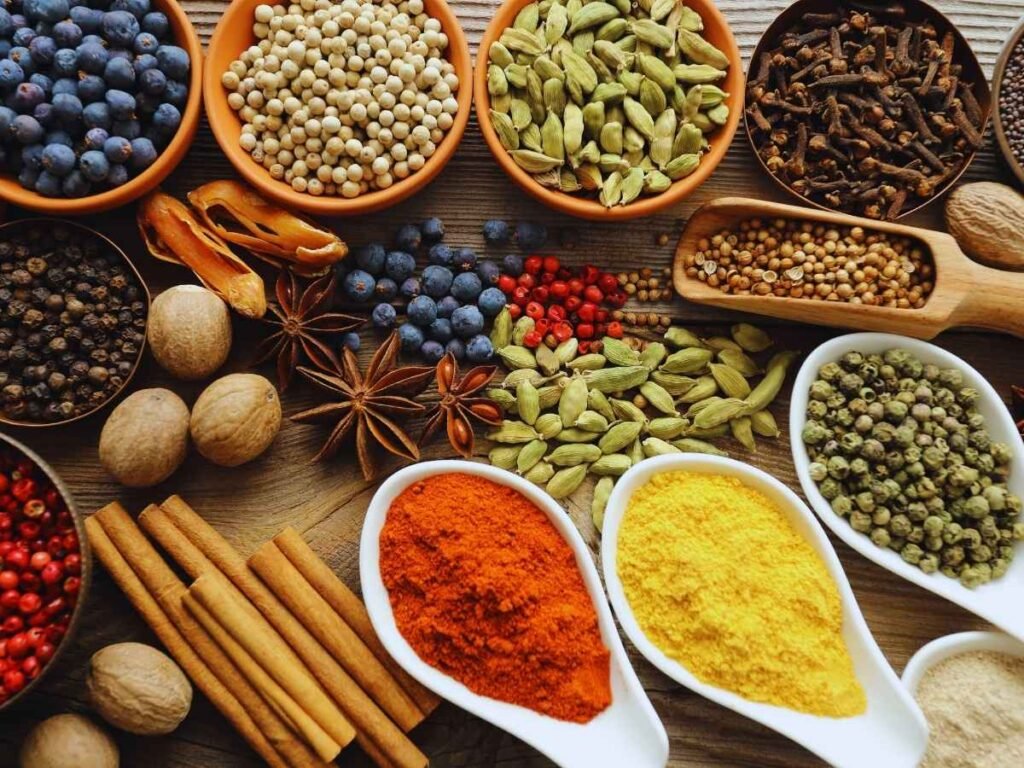
Becoming skilled at cooking with jerk seasoning creates endless culinary possibilities. Cooks can craft traditional Jamaican dishes or explore innovative fusion creations. This distinctive spice blend lets you experiment with proteins and vegetables through different cooking methods that preserve its authentic Caribbean essence.
Classic jerk chicken recipe
Making authentic jerk chicken needs the right technique and timing. The chicken should rest in seasoning mixture at least 2 hours, but leaving it overnight gives you the best flavor. Here’s the quickest way to nail this recipe:
- Make shallow cuts in the chicken so flavors seep in better
- Really work the marinade into the meat
- Keep cooking temperature steady at 180°-185°F
- Keep basting with leftover marinade
The chicken needs two-zone grilling: a quick char over high heat first, then cook it slowly over indirect heat until done. Traditional preparation calls for the cooked chicken to be chopped into pieces and served with classic sides like rice and peas.
Vegetarian and vegan applications
Jerk seasoning brings intense flavors to plant-based cooking and enhances vegetables and meat alternatives naturally. Tofu makes a great protein base that needs proper preparation:
Step Duration Key Note Press tofu 1 hour Remove excess moisture Marinate 1 hour Use wet jerk seasoning Cook 20-25 mins Until golden brown Eggplant “steaks” create a perfect base for jerk seasoning. The recipe needs thick slices brushed with a marinade that combines tamari, coconut sugar, fresh ginger, and the jerk spice blend. You can grill or pan-sear them to create a satisfying, meat-like texture.
Fusion cuisine ideas
Chefs today are finding creative ways to blend Jamaican jerk spice recipe into fusion dishes. This seasoning’s complex flavor profile enhances cooking styles of all types:
- Caribbean-Asian fusion bowls featuring:
- Jerk-spiced proteins
- Sweet potato
- Couscous
- Rum-glazed bananas
Success in fusion cooking depends on balancing bold jerk flavors with complementary ingredients. Sweet and savory combinations shine especially when you have mango salsa alongside jerk-seasoned dishes. Modern chefs blend the traditional spice mix with:
- Coconut milk-based sauces
- Citrus fruit accompaniments
- International grain bases
- Contemporary cooking techniques
The jerk spice blend’s integrity remains crucial as you explore new flavor combinations. This versatile seasoning works beautifully with traditional Caribbean sides and international accompaniments, which makes it perfect for creative culinary adventures.
How to Make Authentic Jerk Spice Recipe at Home
Course: SpicesCuisine: Jamaican/CaribbeanDifficulty: Easy6
servings5
minutes10
kcalThis homemade Jamaican jerk spice blend captures the bold, smoky, and aromatic flavors of the Caribbean. Perfect as a dry rub or marinade for meats, seafood, and vegetables, it combines warming spices, fresh herbs, and a touch of heat for an authentic taste.
Ingredients
1 tbsp ground allspice
1 tbsp garlic powder
1 tbsp onion powder
1 tbsp smoked paprika
2 tsp ground cinnamon
2 tsp ground nutmeg
2 tsp ground cloves
1 tsp cayenne pepper (adjust to taste)
2 tbsp dried thyme
1 tsp dried basil
1 tsp ground coriander
1 tbsp dark brown sugar (optional)
1 tsp black pepper
1 tsp kosher salt
Directions
- Mix all ingredients in a bowl until well combined.
- Ensure even blending by breaking up any clumps.
- Store in an airtight container in a cool, dark place for up to 6 months.
Recipe Video
Notes
- Adjust the cayenne or Scotch bonnet pepper flakes to control the heat level. For maximum flavor, use fresh, high-quality spices and store the blend in an airtight container away from light and moisture.
Conclusion
Jamaican jerk seasoning proves centuries of culinary progress. This unique spice mixture combines indigenous wisdom with African traditions. Quality ingredients and proper techniques help home cooks create authentic jerk seasoning that matches traditional Caribbean preparations. The distinctive character comes from a careful balance of allspice, scotch bonnet peppers, aromatic herbs, and warming spices. This versatile blend works well with different cooking styles, from classic jerk chicken to innovative vegetarian dishes.
Becoming skilled at using jerk seasoning creates opportunities in both traditional and contemporary cuisine. Cooks can preserve authentic Jamaican flavors while learning new culinary possibilities. The seasoning’s heat levels and spice ratios can be adjusted to suit different palates without losing its core character. Home cooks who carefully prepare and store this vibrant seasoning can keep it ready to turn ordinary dishes into memorable Caribbean-inspired meals.
FAQs
What ingredients are typically found in traditional jerk seasoning?
Traditional jerk seasoning is composed of a variety of spices including garlic powder or granules, onion powder, dried thyme, ground allspice, ground ginger, cayenne pepper, ground cinnamon, ground nutmeg, smoked paprika, ground cloves, ground white pepper, and dark brown sugar.
Are Caribbean jerk seasoning and Jamaican jerk seasoning the same?
Yes, Jamaican jerk seasoning is often referred to as Caribbean seasoning. Originating from the Arawak indigenous tribe in Jamaica around the late 1400s, jerk is both a unique method and blend of seasoning for cooking meat.
How do jerk seasoning and Cajun seasoning differ?
Jerk seasoning and Cajun seasoning are distinct in their ingredients and flavor profiles. Jerk seasoning is known for its spicy, smoky, and sweet flavors, featuring ingredients like Scotch Bonnet peppers, allspice, and nutmeg. In contrast, Cajun seasoning typically includes a mix of herbs, hot peppers, and spices such as paprika and cayenne, focusing more on herbal flavors.
What seasoning blend is most similar to jerk seasoning?
Cajun seasoning shares some similarities with jerk seasoning, as both are spicy blends that include cayenne pepper, smoked paprika, onion powder, garlic powder, parsley, thyme, salt, and pepper. However, each has unique elements that distinguish them from one another.

